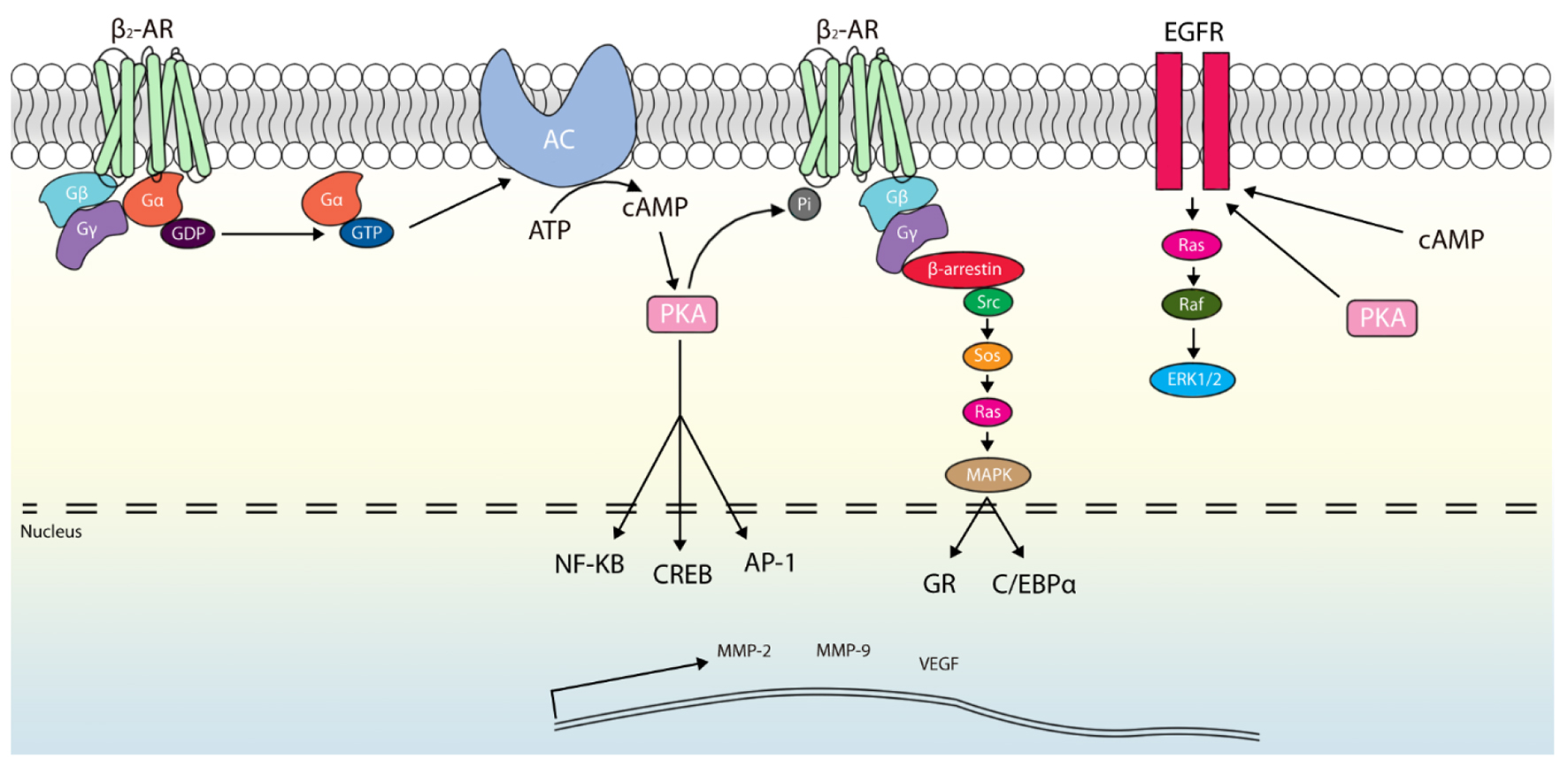
Figure 1. Pathways of adrenergic-mediated oncogenesis within pancreatic ductal cells. Activation of the β2-adrenergic receptor (β2AR) leads to α-subunit binding with guanosine triphosphate (GTP) and release. Activated Gα can promote adenylate cyclase (AC) activity, which produces cyclic adenosine monophosphate (cAMP). Protein kinase A (PKA) is then activated by cAMP, which in turn stimulates generation of multiple transcription factors (NF-kB, cAMP response element binding protein (CREB) and activator protein 1 (AP-1)). Additionally, β2AR may be phosphorylated by PKA to serve as scaffolding for β-arrestin and to initiate a second messenger cascade culminating in p38 mitogen-activated protein kinase (MAPK)-mediated activation of glucocorticoid receptor (GR) and CCAAT enhancer binding protein (C/EBPα). Similarly, an epidermal growth factor receptor (EGFR)-mediated pathway can be promoted through cAMP and PKA activity downstream of β2AR. These signaling cascades lead to transcription of proliferation and angiogenesis promoters (e.g., matrix metalloproteinase (MMP)-2, MMP-9 and vascular endothelial growth factor (VEGF)).